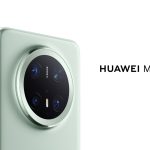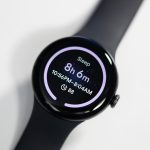There’s something special about an arcade stick that keeps a clean design and offers little to distract players from seeking out the intended button. Victrix started their line of tournament-grade arcade sticks back in 2018 with the Victrix Pro FS: a fight stick bearing an aluminum chassis with a brushed finish on top and a price tag to match. I had first fallen in love with the designs when touring a behind-closed-doors meeting room at E3 one year and this marks the first time I’ve had the Victrix Pro FS in my hands to give it a proper once over as someone that missed attending EVO 2022.
Victrix, a manufacturer under the PDP umbrella, first started a few years before as a headset manufacturer for tournament players. When the Pro FS arcade stick launched, it was being branded as a premium tool for players that were already familiar with the same Sanwa Denshi lever and buttons that are present across nearly every other stick on the market unless you’re either sourcing cheaper components for entry-level devices or are the likes of Razer and can manufacture your own push buttons. Sure, concave Seimitsu buttons are incredibly popular across a variety of players and arcade operators but don’t have the same broad appeal as Sanwa’s convex OBSF-30s.
What sets the second-generation Victrix Pro FS apart from other sticks is, first and foremost, the chassis. Immediately players that lay eyes on the Victrix Pro FS will notice that the entire body of the arcade stick is built from a single piece of aluminum. There are no hinges or screw holes to run your fingers along across the top of the device; instead, a foam-covered panel on the underside hides the accessible internals. With just a single finger, users can unlock the panel and lift it open to gain access to the important components.
No matter how gentle your touch is with Sanwa pushbuttons, they will always eventually wear out over time. When the springs don’t pop up like they used to or they get a little too soft and squishy, it comes time to replace them. Two purple braided cables branch off across the top and bottom rows of pushbuttons with both connectors sticking out of the braided cabling to attach to both buttons. Replacing a given pushbutton is as simple as detaching the two connectors and then pressing in both wing tabs on the pushbutton to let it lift smoothly from the top of the controller. There’s no messy epoxy adhesive to keep the buttons in place that might have been found on low-grade products. I do appreciate the milled slits in the aluminum casing for the two tabs on the push buttons to rest in place and prevent them from any unnecessary rotation during transportation. The only thing missing from inside is a button layout map to show repair techs which hole matches a corresponding button, but if you’re only replacing one button at a time, I don’t suspect that to be an issue.
Similarly, the Sanwa JLF joystick base is easily accessible in the Victrix Pro FS panel. The restrictor plate is easily accessible for those that want to switch from a square gate to an octagonal or circle gate. Four Philips head screws and a single cable connector are all that have to be removed to replace the entire joystick assembly and switch it out with anything else the player may prefer. Maintenance and component swapping is standard across the Victrix Pro FS’ Sanwa switch as with any other arcade stick on the market. Once the JLF E-clip is removed, players can remove the entire joystick pole and actuator/spring to customize them freely.
One piece that I’m excited to see included in the Victrix Pro FS is a removable joystick with The Link 2, a removable lever that’s as easy to remove as pulling up on the joystick base to detach the full upper assembly complete with ball top and dust cover washer at once. There’s even a cavity inside the Victrix Pro FS cavity to fit The Link 2 during transport. A silicone dust cap covers that hole during transportation and similarly, there’s even a dedicated port to keep the cover attached inside the stick when not needed. If you’re a player that doesn’t want a detachable joystick and would prefer to keep it attached at all times, Victrix has included a basic black ball top lever that can be replaced just as easily as detaching that E-clip from the actuator base (which always tend to go flying if you aren’t careful with removal), pulling one shaft out and inserting the other. With practice, the whole lever assembly can be fully replaced in less than thirty seconds, which is handy if you’re one to loan out your sticks and get them returned in worse condition.
Aside from a console selector (PS4/PS5/PC) switch inside the cavity, nothing else is intended to be user serviceable. Tri-angle and Philips screws lock the remainder of the Victrix Pro FS’ electricals from user service to keep less-experienced tournament fighters from getting into what may need a full replacement within. An Allen wrench is also neatly contained inside, although its only purposes are to remove or replace the cable wrap that sticks out from the rear end of the arcade stick as well as tightening/loosening the ball top when using The Link 2 shaft. At the price, I would have liked to see additional storage for what players would really need on the road: an additional restrictor plate, a pair of Sanwa pushbuttons, and even the Sanwa JLF lever that doesn’t include The Link 2. The Mad Catz TE2+ stick from 2014 offered that additional storage for replacement OBSF-30, but in Victrix’s defense, the presentation wasn’t anywhere close to being as clean as the purple-and-black cabling that adorns the internals of the Victrix Pro FS.
The other notable bits of the underside of the Victrix Pro FS are wide handled grips on either side that allow for easy lifting and carrying from station to station that feature a hard rubber polymer that should prove to be more durable than the foam attached to the underside panel while simultaneously keeping the controller from sliding around a variety of surfaces, whether you prefer to play with your arcade stick on a tabletop or resting on your lap. On either side of the Victrix Pro FS are also recessed indents that hide the lighting recessed in each crevice. When the lights are activated, the lighting protrudes from about two inches deep into either handhold, providing the stick with a soft and mellow glow without any glaring LEDs shining back at the player.
Looking back at the frame of the Victrix Pro FS, it’s clear to see that the Victrix team has built their arcade stick with ergonomics in mind. With no sharp or well-defined edges to the unibody design, the Victrix Pro FS is intended to comfortably rest on a player’s lap. While not immediately noticeable from a front view, the lower third of the arcade stick has a slight angle (Victrix claims it’s a 6.28-degree angle to match the slope of the average player’s wrists). It’s a small touch that goes to prolong the comfort of the wielder during longer sets.
Lastly, the removable USB Type-C cable fits deeply within the drilled port in the front end of the Victrix Pro FS. This particular cable comes in at three meters in length to support playing on the couch, monitors set up in the hotel bathroom to play Melty Blood, and anywhere in between. The gap is wider than needed to accommodate the purple braided USB-C cable included with the purchase, so players aren’t forced to just seek out another Victrix-branded cable if theirs fails in the heat of battle.
Once the stick is plugged in and turned on, the six-panel buttons are illuminated to match the recessed lighting on either side of the Victrix Pro FS. From left to right, not including the Home button, the Victrix Pro FS panel features Share, Lighting, Audio, Touchpad, Victrix, L3/Pro, and Options Buttons in a single row with LED lighting illuminating the buttons that are otherwise invisible to read.
The Lighting and Audio buttons both take some training to get the hang of if you don’t have Victrix’s Quick Start Guide on hand (rather than a traditional manual, the Victrix Pro FS box is filled with QR codes that take you to the online one-pager PDF). For the lighting, tapping the Lighting button cycles through various modes while holding the button down and moving the joystick to either side cycles through the preset colors. Victrix’s Audio button is solely for those that are playing with a 3.5mm headset plugged into the headphone jack on the front of the stick. Holding the Audio button down and moving the stick up or down adjusts the volume levels while double-tapping the button mutes/unmutes the user’s microphone. Directly to the right of the PlayStation touchpad is the Tournament button that locks out all of the panel buttons from being accidentally pressed while tapping it again releases the lock-out. The Victrix Pro FS will visibly pulse red every few seconds to remind the player of the engaged mode to keep them from scratching their head and wondering why their Options button isn’t working.
Lastly, the Pro button can be remapped to whichever button the player wishes. By default, the Pro button is set to L3 but can be remapped to other buttons, such as R3, by holding down both the Victrix and Pro buttons for three seconds and then tilting the joystick to the right. Tapping both buttons a second time resets the Pro button back to default or R3. For fighting games like Guilty Gear Strive that use the L3/R3 buttons to record and playback training mode, not having a dedicated pair of L3/R3 buttons feels like an oversight on an otherwise immaculate $400 arcade stick.
Now that I’ve had the Victrix Pro FS in hand for a few weeks, how does it hold up? Quite well, I must say. The Sanwa buttons are just as responsive as the day I took the stick out of the box and the braided cable shows no sign of wear or fraying. However, the power white finish atop the Victrix Pro FS is already starting to show wear in a few spots where my watch band scuffed across the top of the panel as well as some wear along the left edge of the stick from letting the controller stand up vertically on my desk when not in use. I suspect that anything the fight stick might bounce up against while in a travel bag might exacerbate the wear to the powder white finish, which is why Victrix includes a cloth storage bag inside the box with every purchase.
The tough part about grading arcade sticks like the Victrix Pro FS is that they largely use the same Sanwa components, so the out-of-the-box experience is identical for most players and it’s the build quality and control panel that makes up the difference. As a $400 arcade stick, Victrix has clearly put that price tag in place to justify the one-piece aluminum shell that fits the entire controller. Everything from the controller lighting to the easily accessible underside panel is high marks of praise for this premium arcade stick. When you’re paying such a premium price for an arcade stick that could carry you from tournament to tournament, you want a product that will last and hold up over time. While I’m not so sure the powdered white finish will do just that, the fact that Victrix has made this stick so easy to mod and replace all of the components prone to standard wear and wear is a positive in my book. Perhaps the most glaring flaw to Victrix’s premium arcade stick line is unusual button combinations and waiting for timers just to access the R3 button that’s clearly missing from the control panel.
Review unit provided by the manufacturer.
The post Victrix Pro FS Arcade Controller Review – Clean Cut, Tournament Ready by Kai Powell appeared first on Wccftech.







